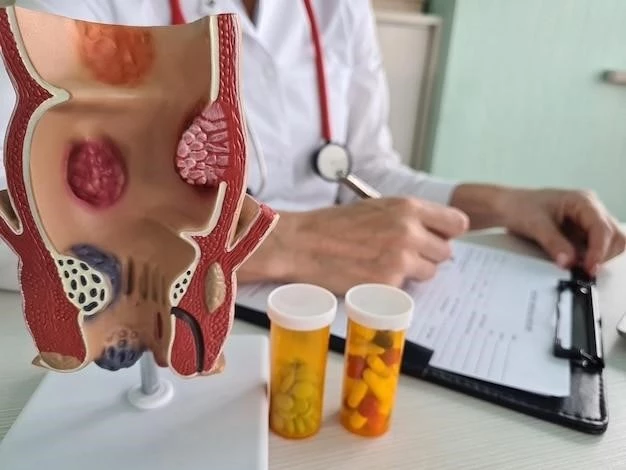Article Plan⁚ Disease — Strongyloidiasis
Overview of Strongyloidiasis
Strongyloidiasis is an intestinal infection caused by the roundworm Strongyloides stercoralis, which enters the body through contact with soil contaminated with the worm. This parasitic infection can lead to various symptoms, ranging from rash, cough, diarrhea, weight loss, to more severe complications, especially in individuals with weakened immune systems. Diagnosis involves identifying larvae in stool samples or detecting antibodies in blood tests. Treatment typically includes medications like ivermectin or albendazole. It’s crucial to be vigilant about preventive measures to avoid contracting this parasitic disease.
Causes of Strongyloidiasis
Strongyloidiasis is caused by the parasitic roundworm Strongyloides stercoralis, primarily found in warm, moist regions. The infection occurs when individuals come into contact with soil contaminated by the worm. Walking barefoot increases the risk of contracting the disease through direct penetration of the skin by infective larvae. This helminthic infection poses a substantial risk, especially in tropical and subtropical areas with poor sanitation where the worm thrives. Understanding the transmission and risk factors can help individuals take preventive measures to avoid exposure to S. stercoralis.
Transmission of Strongyloidiasis
Strongyloidiasis is primarily transmitted through direct skin contact with soil contaminated by the infective larvae of the parasitic worm Strongyloides stercoralis. Walking barefoot in regions where the worm is prevalent increases the risk of contracting the infection. The larvae penetrate the skin, entering the body and establishing the parasitic cycle. Understanding the mode of transmission is crucial in implementing preventive strategies to reduce the risk of exposure to this potentially harmful parasite.
Symptoms of Strongyloidiasis
Strongyloidiasis can manifest with a range of symptoms, including rash, cough, abdominal pain, diarrhea, weight loss, and in severe cases, life-threatening complications. Skin penetration by the parasitic larvae can lead to localized skin irritation. It is essential to recognize the diverse symptoms to facilitate early diagnosis and prompt treatment. Individuals experiencing any of these symptoms, especially in regions where the parasite is prevalent, should seek medical attention for appropriate management.
Diagnosis of Strongyloidiasis
Diagnosing strongyloidiasis involves identifying the parasitic larvae through stool samples or detecting specific antibodies in blood tests. In cases where larvae are present, visualization under a microscope can confirm the infection. Blood tests may reveal elevated levels of certain antibodies indicative of Strongyloides exposure. Prompt and accurate diagnosis is crucial to initiate appropriate treatment and prevent potential complications associated with this parasitic infection.
Complications of Strongyloidiasis
Strongyloidiasis can lead to various complications, particularly in individuals with weakened immune systems. The parasitic infection can cause severe manifestations such as disseminated strongyloidiasis, hyperinfection syndrome, and potentially fatal hyperinfection. These complications can result in widespread dissemination of the parasite throughout the body, including the lungs, liver, and central nervous system. Recognizing and managing these complex complications promptly is essential in improving patient outcomes and preventing further health risks.
Treatment Options for Strongyloidiasis
Treatment for Strongyloidiasis typically involves antiparasitic medications such as ivermectin or albendazole. These medications work to eliminate the parasitic worm Strongyloides stercoralis from the body. It is essential to complete the full course of treatment as prescribed by a healthcare provider to ensure the infection is fully cleared. In addition to medication, supportive care may be necessary, especially for individuals with severe symptoms or complications. Seeking medical advice promptly is crucial for effective management of Strongyloidiasis.
Medications for Strongyloidiasis
Antiparasitic medications like ivermectin and albendazole are commonly used to treat Strongyloidiasis; These medications target the parasitic worm Strongyloides stercoralis and aid in its elimination from the body. It is crucial to follow the prescribed treatment regimen to ensure the infection is effectively cleared. Seeking medical advice for the most suitable medication and dosage is essential in managing Strongyloidiasis and preventing complications.
Prevention of Strongyloidiasis

Preventing Strongyloidiasis involves several key measures to reduce the risk of exposure to the parasitic worm Strongyloides stercoralis. Avoiding direct skin contact with contaminated soil, especially in tropical and subtropical regions, is crucial. Wearing shoes outdoors can provide a physical barrier against the infective larvae. Practicing good hygiene, such as washing hands thoroughly and maintaining clean living environments, can also help prevent infection. Additionally, seeking medical advice before traveling to endemic areas can provide guidance on preventive strategies.
Strongyloidiasis in Children
Strongyloidiasis can affect children, particularly in regions with warm and moist climates where the parasitic worm Strongyloides stercoralis thrives. Children may experience symptoms such as abdominal pain, diarrhea, skin rash, and weight loss if infected. Due to developing immune systems, children may be more susceptible to complications from the infection. Early detection and appropriate treatment are crucial to managing strongyloidiasis in children effectively.
Strongyloidiasis in Immunocompromised Individuals
Strongyloidiasis poses a higher risk and more severe complications in immunocompromised individuals, including those with conditions like HIV/AIDS or undergoing immunosuppressive therapy. The parasitic infection can lead to hyperinfection syndrome or dissemination to vital organs, potentially causing life-threatening complications. Due to the heightened susceptibility in this population, early detection, appropriate treatment, and close monitoring are critical to managing Strongyloidiasis effectively.
Strongyloidiasis vs. Other Parasitic Infections
Comparing strongyloidiasis to other parasitic infections reveals unique characteristics of this intestinal worm infestation. Strongyloides stercoralis, the causative agent of strongyloidiasis, has distinctive abilities like autoinfection, enabling long-term survival in hosts. The potential for overwhelming hyperinfection in immunocompromised individuals sets strongyloidiasis apart from many other parasitic diseases. Understanding these differences is crucial for accurate diagnosis and effective management.
Global Impact of Strongyloidiasis
Strongyloidiasis has a significant global impact, especially in tropical and subtropical regions where the parasitic worm Strongyloides stercoralis thrives. An estimated 30-100 million people worldwide are infected with strongyloidiasis, although the actual prevalence may be higher due to underdiagnosis. The disease burden includes chronic symptoms, complications, and the potential for life-threatening outcomes, particularly in immunocompromised individuals. Understanding the global prevalence and impact of strongyloidiasis is essential for effective public health interventions and healthcare strategies.
Research and Developments in Strongyloidiasis
Ongoing research in the field of Strongyloidiasis focuses on improving diagnostic methods, exploring new treatment options, and understanding the parasite’s biology to develop preventive strategies. Advancements in molecular techniques have enhanced the detection of Strongyloides parasites, leading to more accurate diagnoses. Additionally, clinical trials are investigating novel medications and treatment regimens to ensure effective management of this parasitic infection. Stay updated on the latest developments to enhance knowledge and combat Strongyloidiasis effectively.
Case Studies of Strongyloidiasis
Exploring strongyloidiasis case studies provides valuable insights into the diverse presentations and outcomes of this parasitic infection. These real-world scenarios illustrate the importance of early diagnosis, appropriate treatment, and monitoring for potential complications. By examining varied cases involving different age groups, immune statuses, and symptomatology, healthcare professionals can enhance their understanding of strongyloidiasis management and improve patient care strategies.
Conclusion and Final Thoughts on Managing Strongyloidiasis

In conclusion, managing strongyloidiasis requires a comprehensive approach that includes early diagnosis, appropriate treatment with antiparasitic medications, and vigilant monitoring for potential complications, especially in immunocompromised individuals. Understanding the global impact, ongoing research, and preventive measures are essential in combating this parasitic infection effectively. By staying informed about the latest developments and advancements in strongyloidiasis management, healthcare professionals and individuals can work together to minimize the burden of this disease and improve outcomes.
